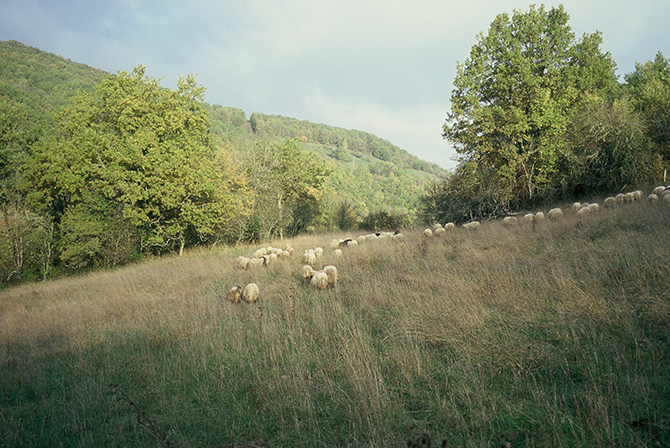2021-10
COSMIC WONDER
Japanese wool and Cashmere garments

These Japanese wool garments are hand-spun and hand-knitted. Rare Japanese wool is shorn at a farm and washed by hand to remove dirt and oil. Hand-washing does not remove too much oil from the wool, keeping it warm. Each garment is made from the wool of one sheep, thus retaining that sheep’s unique texture. The garments are made by Kana Ushijima, who creates beautiful hand-spun wool yarns, and Tomoko Kodama, who hand-knits the unique yarns with precision. Cashmere has excellent heat retention properties. Cashmere garments are also very light and give everlasting comfort. The cashmere from Inner Mongolia, considered to be of the highest quality, is spun in Japan and knitted with a seamless ‘whole garment’ design.
We are pleased to present an exhibition of “Japanese wool and Cashmere garments”. These precious garments are a collaboration of nature and people and will grace us with everlasting love.
Photo top: Wool from Miwa Farm, Kyoto
Photo bottom: Wool from Hitsuji-mikan Farm, Mie Prefecture
−
STARDUST
Exhibition period:
October 23 − October 31, 2021
Open 11am − 6pm
41 Shimodakedono-cho, Shichiku Kita-ku, Kyoto
T. +81 (0)75 286 7296
Center for COSMIC WONDER
Exhibition period:
November 6 − November 21, 2021
Open noon – 6pm
5-18-10 Minami-aoyama, Minato-ku, Tokyo
T. +81 (0)3 5774 6866

The sheep around me

I live surrounded by causses, landscapes that have been shaped by sheep farming over centuries. Sheepfold, shepherds shelters and low walls separating plots, all made of dry stone, are reminding us of this past. Causses, which are limestone plateaus , are situated several hundreds meters above sea level but are not mountains, not even hills, they are flat. On these plateaus, because of the specific composition of the ground, not much can grow. Farmers have been grazing sheep here since the beginning of time. The sheep are raised for their milk which is made into cheese. To produce milk, sheep have to have lambs every year, whom are traditionally killed and eaten for Easter, following Christian, Jewish and Muslim traditions. The wool, sheared every year, is also used for bedding (mattresses, pillows, blankets) and clothes. There is one kind of sheep that is specific to the region where I live, that is commonly called ‘sheep with glasses’ because they are black around their eyes. It looks like they have black glasses on.
Nowadays sheep farming is less common here, unlike in the Basque Country where it remains an important activity.
One of my friends is a shepherd. His name is Antoine and I photographed him for my slide show, Ici-bas. He didn’t come from a shepherd family but he wanted to lead a different life. The shepherd is still a synonym of freedom and solitude, maybe similar to a traveling monk in Asian cultures. It’s hard work but you get to live in nature, with the cycles of seasons. Antoine’s sheep, of Sarda breed, are particularly beautiful. He treats them with much respect and uses natural remedies whenever they get sick. In the Summer he moves his flock to another location so that the sheep have access to more grass. This move is called transhumance and is practiced in Europe since prehistoric times.
I recently visited the mountains of Basque country close to the Spanish border. We could see many sheep in their summer grazing, free on the land, no fences. There was different types of sheep. Among them black face manech, typical of the basque country, whose wool is particularly hard and itchy. I have a sweater made of that wool by Mary, the old woman who was spinning and knitting wool in my village. When she turned 90 years old, two years ago, she stopped her work. I am so happy I could buy several of her pieces made with raw wool and which have a very unique feel. Mary was using whatever wool was given to her by shepherds. The manech wool pieces, even though not very comfortable, are the most beautiful to look at.
I find it magic when I see sheep. These white fluffy silhouettes punctuating the land. Sometimes they look at me and when our eyes meet I get mixed feelings. I am reminded I also am a mammal.
September, 2021
Elein Fleiss
Photography: Elein Fleiss



 Facebook
Facebook Twitter
Twitter